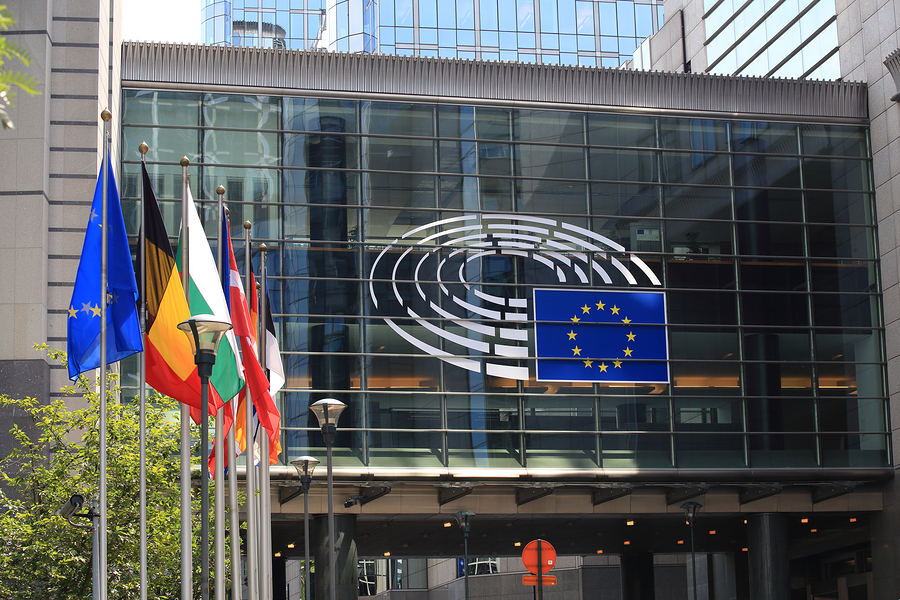The European Union’s (EU) Green Deal is set to tackle Europe’s high emissions and with it looks at how modern technologies can aid this development faster, writes Samantha Fisk.
Shipping is the backbone of transport in Europe with three quarters of its external trade and one third of inter-EU trade making up the total of the EU’s economy. The emissions that shipping creates has come under the spotlight and is being heavily scrutinised by the outside world. The European Commission (EC) already admits that shipping is one of the energy efficient forms of transport, but further improvements can be made.
In 2018 data was collected under the (EU) 2015/757 regulation for the monitoring, reporting and verification (MRV) of CO2 emissions from maritime transport which confirmed that CO2 emissions from maritime transport were substantial, with over 138 million tonnes of CO2 released into the atmosphere in 2018 (data from Sept 2019). This represents over 3% of total EU CO2 emissions (including international aviation), and shipping emissions amount to around 13% of EU transport emissions.
The European Commission has already highlighted how shipping in the region will have to undergo what it calls a “systematic change” to become carbon neutral, as well as meet the targets set out by the International Maritime Organization (IMO). This systematic change includes how vessels are designed, built, fuelled and operated, including their interaction in ports.
The EC will be proposing a number of actions as part of the Green Deal that are expected to enhance the emission reduction efforts by 2030 across all industries, including shipping.
A spokesperson for the EC also noted that: “Complementary to EU efforts, the EU is also actively contributing to ongoing negotiations in IMO to implement the initial IMO strategy aimed at reducing emissions from international shipping by at least 50 % by 2050”. The EU is also working towards an agreement for short-term measures for the next IMO meeting.
Scrubber tech
Over the last few months and since the 2020 Sulphur cap came into play exhaust gas cleaning (scrubber) technology has seen an upswing in adoption.
The EC has said that through the implementation of the EU sulphur legislation it has seen sulphur dioxide concentrations halved around Emission Control Areas (ECAs), established in the North Sea and the Baltic Sea, while the overall economic impacts on the sector remained minimal. “Nevertheless, the stricter ECA requirements are designed to improve air quality but not at the expense of the marine environment as well as of the sea –related economic activities”, highlights the spokesperson.
However, the EC has highlighted that during the last ten years scientific evidence has been increasingly pointing to the negative impact on sea waters due to the exhaust gas circulation systems (EGCS) installed on ships to comply with EU legislation reducing the sulphur content in marine fuels.
The spokesperson notes that: “To comply with EU legislation protecting waters and the marine ecosystems, EU Member States are taking different positions regarding scrubber emissions in their ports, including bans. At global level, Singapore, China, several US ports, Fujairah (UAE) and most recently South Korea and Egypt (Suez Canal) have also announced relevant bans in their waters.”
Discussions are still ongoing about this technology within EU ports and other sensitive areas which include the lack of harmonisation. The EC states that a dialogue was facilitated in 2013 with Member State Authorities to provide information about local restrictions as regards scrubber wash waters and waste.
In 2019, the EU proposed to the IMO to launch a new activity supporting for stricter and global obligations, including prohibiting in a harmonised manner the EGCS discharges to ports and sensitive sea areas.
The IMO has endorsed the activity planned for 2020-2021 and at the February meeting of an IMO technical subcommittee the EU was instrumental in shaping the scope of further work and to ensure that a harmonised risk assessment is established in view of the possible development of regulations on which the EU will continue to actively contribute to protect the marine environment while avoid distortion of competition among shipping companies and ports.
Digital future
The EC believes that digital technologies with play an important role in making the shipping industry cleaner and more efficient in the future.
“Digital technologies are a key part of making sure Europe reaches that ambitious goal across many different sectors of our society and economy”, comments the spokesperson, “Digital technologies could help reduce overall emissions by up to seven times more than the emissions they themselves produce – and help to reduce global emissions by up to 15%.”
However, the EC notes that the ICT sector also faces its own green challenge with estimations showing that it currently accounts for “between 5 and 9% of global electricity consumption and more than 2% of global greenhouse gas emissions.”
The EC has said that it will work on energy and material efficiency measures to ensure that the environmental footprint of ICT is reduced, for example by improving the durability, maintenance, reparability and recycling of electronic devices.
































